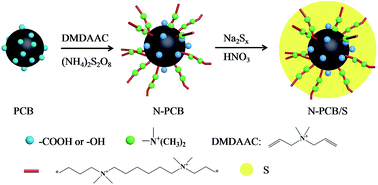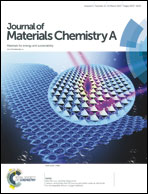Enhanced Li–S batteries using cation-functionalized pigment nanocarbon in core–shell structured composite cathodes†
Abstract
Rechargeable lithium–sulfur (Li–S) batteries are regarded as one of the most promising options for electrochemical energy storage systems owing to their high energy density and low cost. However, their practical use is hindered by multiple challenges and one of them is capacity decay caused by polysulfide dissolution and the insulating nature of sulfur. In this work, a core–shell structured composite (N-PCB/S) has been successfully prepared by depositing sulfur onto pigment carbon black (PCB) and grafting long chain quaternary ammonium ions via a facile method. These functional groups on the pigment carbon black can immobilize the inner layer of sulfur. And the grafted long chain quaternary ammonium ions could insert into the sulfur layer and anchor the outer layer polysulfides because of the electrostatic attraction between the quaternary ammonium cations and polysulfide anions. Therefore, the N-PCB/S composite electrode exhibits great improvement in both cycling performance and rate capability as compared to pristine sulfur and PCB/S composite electrodes, even when the sulfur content of the N-PCB/S composite is as high as 85%. At current densities of 0.1 and 1C, the N-PCB/S composite electrode delivered high reversible specific capacities of ∼1010 and 746 mA h g−1 after 100 cycles, respectively.

- This article is part of the themed collection: 2017 Journal of Materials Chemistry A HOT Papers


 Please wait while we load your content...
Please wait while we load your content...